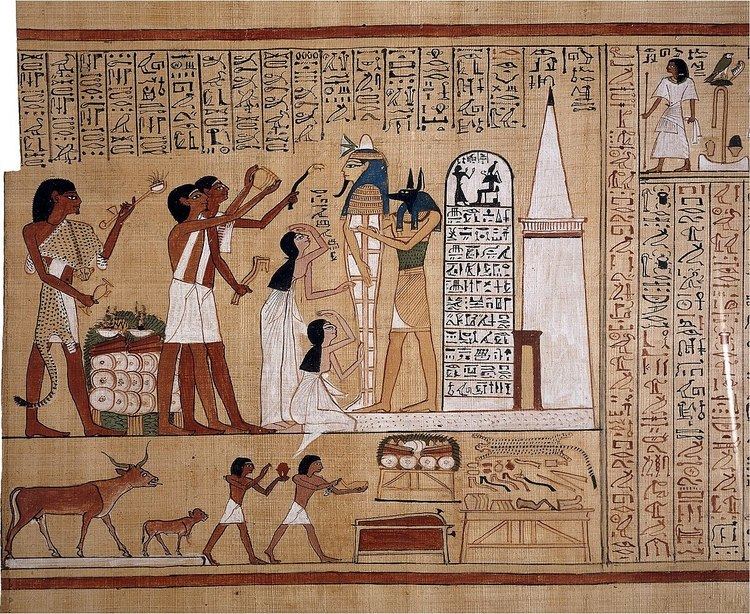 | ||
The opening of the mouth ceremony (or ritual) was an ancient Egyptian ritual described in funerary texts such as the Pyramid Texts.
Contents
Funerary magic
The ceremony involved a symbolic animation of a statue or mummy by magically opening its mouth so that it could breathe and speak. There is evidence of this ritual from the Old Kingdom to the Roman Period. Special tools were used to perform the ceremony, such as a ritual adze, an arm shaped ritual censer, a spooned blade known as a peseshkaf, a serpent-head blade, and a variety of other amulets. A calf's leg was also held up to the lips painted on the coffin.
The ancient Egyptians believed that in order for a person's soul to survive in the afterlife it would need to have food and water. The opening of the mouth ritual was thus performed so that the person who died could eat and drink again in the afterlife.
The ceremony involved up to 75 "episodes" and, in its most complete version, included the following stages:
The Book of the Dead also contains a spell for this process, which the deceased may use on themselves:
My mouth is opened by Ptah,My mouth's bonds are loosed by my city-god.Thoth has come fully equipped with spells,He looses the bonds of Seth from my mouth.Atum has given me my hands,They are placed as guardians.My mouth is given to me,My mouth is opened by Ptah,With that chisel of metalWith which he opened the mouth of the gods.I am Sekhmet-Wadjet who dwells in the west of heaven,I am Sahyt among the souls of On.Connections with Psalm 51
Parallels between the Opening of the Mouth and Psalm 51 have been noted. The parallels include:
